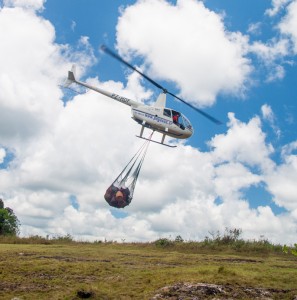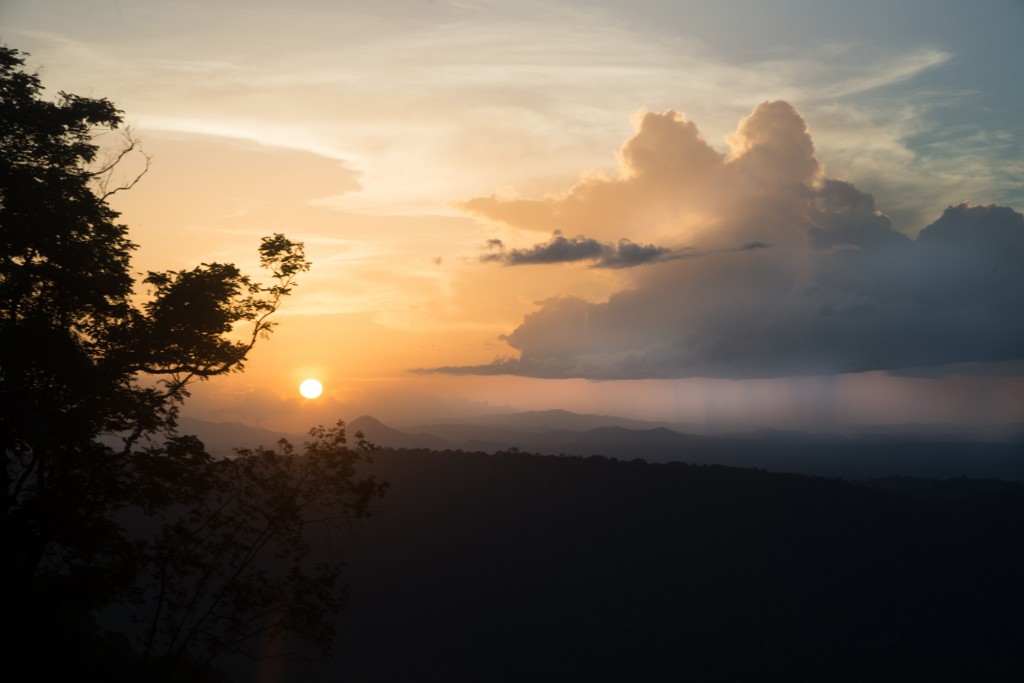An Expedition to Tafelberg: Moving Up The Mountain
Posted in Travelogue on January 31, 2014 by Fabian Michelangeli
Fabian A. Michelangeli, Ph.D., is an Associate Curator of the Institute of Systematic Botany at The New York Botanical Garden. His research focuses in part on the evolution, identification, and classification of neotropical plants. This is the second of four posts about an expedition last year to Suriname in northeastern South America.

As I recounted in last week’s post, it took Basset Maguire, a famous New York Botanical Garden scientist of the mid-20th Century, more than six weeks to travel to the base of Tafelberg, a “table mountain” in central Suriname. It took our team of six scientists and five support staff just over an hour to fly from Paramaribo, Suriname’s capital. Yet we still faced the same problem that Maguire had of getting our equipment and team to the summit, nearly 3,400 feet above our base camp.
In our case, the cargo included all of our food and camp essentials for two weeks, plus all the equipment to collect, study, and document the many different groups of organisms targeted by the expedition: plants, aquatic insects, frogs, lizards, snakes, and fish. Altogether, we needed to move about 1,200 pounds and 11 people to the summit. Once again, we had a faster method that wasn’t available to Maguire: a helicopter.
The first order of business was to locate the best place for our main camp on the summit. Based on the accounts of previous expeditions and hoping to capitalize on an existing network of trails, we chose to camp at the top of Augustus Falls on the northern rim of the mountain. Three people went up on the first trip: University of Kansas entomologist Andrew Short, who led the expedition; Paul Obouter, the director of the National Zoological Collection of Suriname; and Mani, one of our guides. After locating the site, they had to be literally dropped off the helicopter so they could open a clearing where the helicopter could land later with the rest of the crew and the equipment.
In total we needed three trips for the cargo and four trips for the people. After a few hours of logistics and weighing every bag, box, and person as they went into the helicopter, we had relocated everything to the top of Tafelberg. Work on the summit was about to begin.
Our guides and cook quickly got to work building our camp, where we would hang our hammocks. Since we still had daylight, myself and Julian Aguirre, an NYBG graduate student I am advising, took off through the forest to start collecting. It turned out that the existing “trails” were more wishful thinking than reality, so we did not venture far the first afternoon. Given the amazing variety of plants, we still were able to collect a fair amount, including a couple of species of bromeliads that we were targeting that grow only on top of the mountain.
At the end of the day, we all gathered at the edge of the waterfall, the tallest in Suriname, to enjoy the sunset over the forest and plan the days ahead. As beautiful and imposing as the sunset was, we could see storm clouds rolling in, and we knew that if that rain came our way it could present some interesting challenges in the days ahead.

The expedition to Tafelberg was funded by a grant to Andrew Short from the National Geographic Society.

